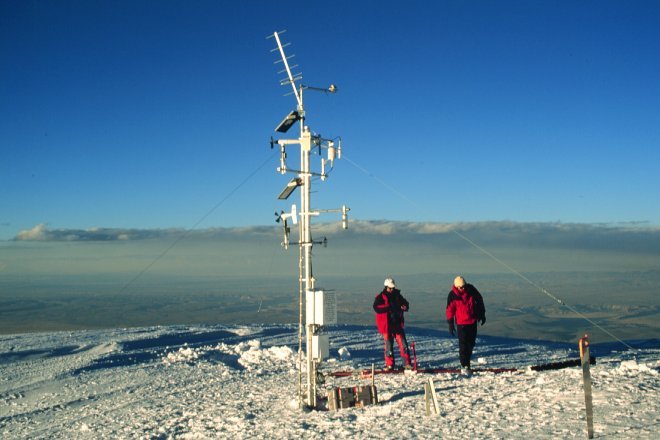Douglas R. Hardy, Mathias Vuille, Carsten Braun, Frank Keimig, Raymond S. Bradley
Dept. of Geosciences, University of Massachusetts, USA
![]()
An automated weather station was installed in October 1996 at the summit of Nevado Sajama, located in the western Andean Cordillera of Bolivia (6,542 m; 18°06' S and 68°53' W). Meteorological conditions on the mountain are being observed to improve the calibration of geochemical variations within tropical ice cores. This article documents the design and operation of the station, and presents a discussion of measurements made through the first annual cycle. Variables analyzed include pressure, incoming solar radiation, air temperature, humidity, wind, and snow accumulation. Large diurnal fluctuations were recorded in most variables, which is not unexpected given the location at 18°S; the data also reveal substantial day to day variability, and rapid seasonal changes in weather and circulation. As a result, snowfall events and periods of evaporation are more episodic in nature than previously believed. Measurement of atmospheric conditions during and between snowfall events will therefore greatly facilitate the interpretation of geochemical variations in each resultant snowpack layer.

![]()
| Return to UMass Bolivia |  |
Climate & Snow Home Page |
Document maintained by Doug Hardy (dhardy@geo.umass.edu)
Last updated: 1 October 1998
http://www.geo.umass.edu/climate/bolivia/amsbulletin.html